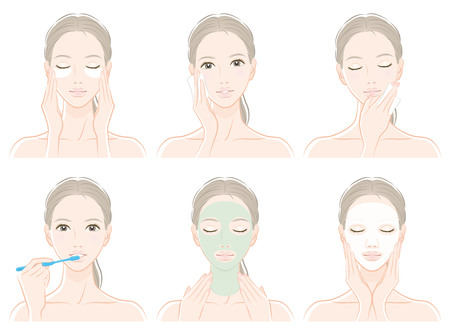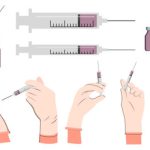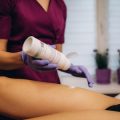Understanding Hooded Eyes and Their Impact
Hooded eyes are a common eye shape that many people in the U.S. have, but not everyone realizes what makes them unique or how they can affect your appearance and even your vision. Let’s break down what hooded eyes are, how they differ from other eye shapes, and some of the most common concerns people have.
What Are Hooded Eyes?
Hooded eyes occur when a fold of skin hangs down over the crease of the eyelid, making the upper lid look smaller. This can be due to genetics or as a result of aging when the skin loses its elasticity. Hooded eyes are completely normal and natural—some celebrities like Jennifer Lawrence and Taylor Swift also have them!
How Do Hooded Eyes Differ from Other Eye Shapes?
| Eye Shape | Main Feature | Common Look |
|---|---|---|
| Hooded Eyes | Extra fold of skin droops over eyelid crease | Eyelids appear less visible, especially when open |
| Monolid Eyes | No visible crease on the eyelid at all | Smooth eyelid surface from lashes to brow |
| Deep Set Eyes | Eyes are set deeper into the skull | Brow bone seems more prominent, larger visible lid space |
| Almond Eyes | Slight upward lift at outer corners; visible crease | Shaped like an almond; balanced lid-to-crease ratio |
Common Concerns with Hooded Eyes
- Appearance: Many people feel their eyes look smaller or tired because the lid isn’t as visible. Makeup can also be tricky, since eyeshadow and eyeliner often get hidden by the extra fold of skin.
- Aging: Hooding can become more noticeable with age as skin loses firmness and starts to sag.
- Vision: In some cases, severe hooding can actually interfere with peripheral vision if the skin droops enough to cover part of the eye.
- Self-confidence: Because hooded eyes change how makeup looks and how expressive your face appears, it can affect self-esteem for some people.
The Bottom Line on Hooded Eyes
If you have hooded eyes, know that you’re not alone—they’re just one of many beautiful eye shapes. Still, it’s understandable to want to learn about treatments that might help tighten eyelids or make your eyes look more open. In the next sections, we’ll explore what options are out there for eyelid tightening and whether these treatments can really make a difference for hooded eyes.
2. Popular Eyelid Tightening Treatments
When it comes to eyelid tightening for hooded eyes, there are several popular treatments available across the United States. These options range from non-surgical procedures that require little to no downtime, to surgical solutions that offer more dramatic results. Let’s take a closer look at what’s available and how they work.
Non-Surgical Eyelid Tightening Options
If you’re hoping to avoid surgery, there are effective non-surgical treatments that can help lift and tighten the skin around your eyes. These are especially appealing if you want less recovery time or aren’t ready for something permanent.
Radiofrequency (RF) Skin Tightening
This treatment uses radiofrequency energy to gently heat the skin, stimulating collagen production. Over time, this helps tighten loose or sagging eyelids. Common brands include Thermage and Pellevé. Most people notice gradual improvements over several months, and results can last up to a year or more with maintenance sessions.
Laser Treatments
Laser resurfacing treatments, like CO2 or Erbium lasers, remove damaged outer layers of skin while encouraging new collagen formation beneath the surface. This leads to tighter, smoother eyelid skin. Downtime varies by laser type—some require only a few days of recovery, while others may need a week or more.
Ultrasound-Based Devices
Treatments such as Ultherapy use focused ultrasound energy to target deep layers of skin without surgery. This process lifts and firms the upper eyelids gradually as new collagen forms over two to three months.
Surgical Eyelid Tightening Option
Blepharoplasty (Eyelid Surgery)
Blepharoplasty is a popular surgical procedure that removes excess skin, fat, and muscle from the upper or lower eyelids. It’s often recommended for those with moderate to severe hooded eyes or when non-surgical treatments aren’t enough. Recovery typically takes about one to two weeks, but results are long-lasting and can be quite dramatic.
Treatment Comparison Table
| Treatment | Type | Main Benefits | Downtime | How Long Results Last |
|---|---|---|---|---|
| RF Skin Tightening | Non-surgical | Stimulates collagen; gradual tightening | Minimal/None | Up to 1 year (with maintenance) |
| Laser Resurfacing | Non-surgical | Smoother, firmer skin; reduces wrinkles | Few days to 1+ week | 1-2 years (varies by type) |
| Ultherapy (Ultrasound) | Non-surgical | Lifts & firms; no incisions | No downtime | 1 year or more (with follow-up) |
| Blepharoplasty Surgery | Surgical | Dramatic lifting; removes excess tissue | 1-2 weeks | 5+ years; often permanent |
The best choice depends on your unique needs, how much improvement you want, your health history, and your comfort with downtime or surgery. A board-certified dermatologist or plastic surgeon in the U.S. can guide you through these options and help pick what fits your goals best.
![]()
3. How Effective Are These Treatments for Hooded Eyes?
If you’re considering eyelid tightening for hooded eyes, it’s important to know what these treatments can and can’t do. In the United States, both non-surgical and surgical options are available, each with their own pros and cons. Let’s take a closer look at how effective these treatments really are, based on common American experiences.
Common Eyelid Tightening Treatments
| Treatment | Method | Typical Results | Downtime | Limitations |
|---|---|---|---|---|
| Blepharoplasty (Eyelid Surgery) | Surgical removal of excess skin/fat | Dramatic improvement; long-lasting | 1-2 weeks | Invasive, higher cost, risk of scarring or infection |
| Laser Skin Tightening | Laser energy stimulates collagen production | Mild to moderate tightening; gradual results over months | Minimal (a few days) | May require multiple sessions; not as dramatic as surgery |
| Radiofrequency (RF) Treatments | Heat-based devices tighten skin | Mild improvement; subtle lift | No downtime | Temporary results; best for mild cases |
| Ultrasound Therapy (Ultherapy) | Focused ultrasound targets deeper layers of skin | Lifting effect over 2-3 months; lasts up to a year | No downtime | Might not work for severe hooding; mild discomfort during procedure |
| Eyelid Creams & Serums | Topical products to firm skin temporarily | Slight improvement; very subtle and short-term | None | No structural change; cosmetic only, needs daily use |
Benefits of Eyelid Tightening Treatments in the U.S.
- Younger Appearance: Many Americans notice they look more alert and refreshed after treatment.
- Customization: Doctors often tailor procedures for each person’s unique eye shape and degree of hooding.
- Boosted Confidence: Feeling better about your appearance is a common outcome shared by patients in American clinics.
The Limitations You Should Know About
- Surgery is Not for Everyone: Some people prefer less invasive options due to health concerns or lifestyle needs.
- Mild Cases Respond Best to Non-Surgical Methods: If your hooded eyes are severe, creams or devices may not give noticeable results.
- Treatments Vary by Individual: Results depend on your age, skin elasticity, and genetics—what works for one person may not work for another.
A Few Real-Life Experiences from American Patients
- Samantha, age 42: “I tried RF treatments first. My lids felt tighter, but I didn’t see much difference until I went with surgery.”
- Carl, age 56: “Laser tightening helped me delay surgery. It wasn’t dramatic, but I looked more rested.”
Eyelid tightening treatments can help with hooded eyes, but understanding their effectiveness—and knowing what to expect—is key when making your decision.
4. Potential Risks, Recovery, and Costs
Possible Side Effects of Eyelid Tightening Treatments
Eyelid tightening treatments for hooded eyes can be surgical or non-surgical. Each option comes with its own set of possible side effects. Here’s a quick overview:
| Treatment Type | Common Side Effects | Less Common Risks |
|---|---|---|
| Surgical (Blepharoplasty) | Swelling, bruising, temporary discomfort | Infection, scarring, dry eyes, difficulty closing eyes |
| Non-Surgical (Laser, Radiofrequency, Ultrasound) | Redness, mild swelling, slight tenderness | Skin pigmentation changes, burns (rare), infection (rare) |
What to Expect During Recovery
The recovery experience depends on the type of treatment you choose. Here’s what you might expect:
Surgical Eyelid Tightening (Blepharoplasty)
- Downtime: Most people take about 1-2 weeks off work or social activities.
- Caring for your eyes: You may need to apply ointments or cold compresses and avoid strenuous activity for a short period.
- Bruising & Swelling: These are normal and usually subside within 10-14 days.
- Follow-up Visits: Your doctor will schedule appointments to check your healing progress.
Non-Surgical Eyelid Tightening
- No downtime: Most people return to their daily routine right away.
- Mild redness or swelling: These effects typically fade within a few hours to a couple of days.
- Multiple sessions: Several treatments may be needed for best results.
Typical Costs in the United States
The price for eyelid tightening can vary based on the provider, location, and specific treatment chosen. Here’s a general guide:
| Treatment Type | Average Cost per Session/Procedure (USD) | Notes |
|---|---|---|
| Surgical Blepharoplasty | $3,000 – $6,000+ | Covers surgeon fees, anesthesia, facility fees; not usually covered by insurance unless medically necessary |
| Laser Skin Tightening | $500 – $2,500 | Price per session; multiple sessions may be required for optimal results |
| Radiofrequency/Ultrasound Tightening (e.g., Thermage, Ultherapy) | $1,000 – $3,500+ | Price per session; effects build over time with repeated treatments |
5. Choosing the Right Approach for You
Deciding which eyelid tightening treatment is best for hooded eyes can feel overwhelming, especially with so many options available in the U.S. From non-invasive procedures to surgical solutions, each method has its own pros and cons. Here’s how you can make an informed decision that fits your needs, goals, and lifestyle.
Consult Qualified Providers
The first step is to seek advice from a board-certified dermatologist or plastic surgeon who has experience treating hooded eyes. Ask about their credentials, look at before-and-after photos of previous patients, and make sure they understand your expectations. In the U.S., you have access to highly trained specialists—don’t be afraid to get a second opinion if needed.
Manage Your Expectations
Every treatment comes with its own set of results and limitations. For example, non-surgical methods like radiofrequency or laser treatments may offer subtle improvements and require multiple sessions, while surgery provides more dramatic, long-lasting changes but involves downtime. Your provider can help you understand what’s realistic based on your unique anatomy and goals.
Consider Your Lifestyle
| Treatment Type | Downtime | Maintenance | Cost Range (USD) | Lifestyle Fit |
|---|---|---|---|---|
| Non-surgical (Radiofrequency, Laser) | Minimal | Repeat every 6-12 months | $500-$2,000 per session | Great for busy schedules; subtle results |
| Eyelid Surgery (Blepharoplasty) | 1-2 weeks | Usually once; results last years | $3,000-$7,000+ | Best for those wanting significant change and can take time off work |
| Injectables (Botox, Fillers) | None to minimal | Every 4-6 months | $300-$800 per treatment area | Quick fix; minimal disruption to daily life |
Insurance and Payment Options
Most cosmetic eyelid procedures aren’t covered by insurance unless there’s a documented medical need (such as vision obstruction). Many clinics in the U.S. offer payment plans or financing to help manage costs.
Cultural Preferences & Communication Styles
American patients often prioritize natural-looking results and quick recovery times. Don’t hesitate to communicate openly with your provider about your preferences—clear communication ensures your outcomes align with your lifestyle and aesthetic goals.


